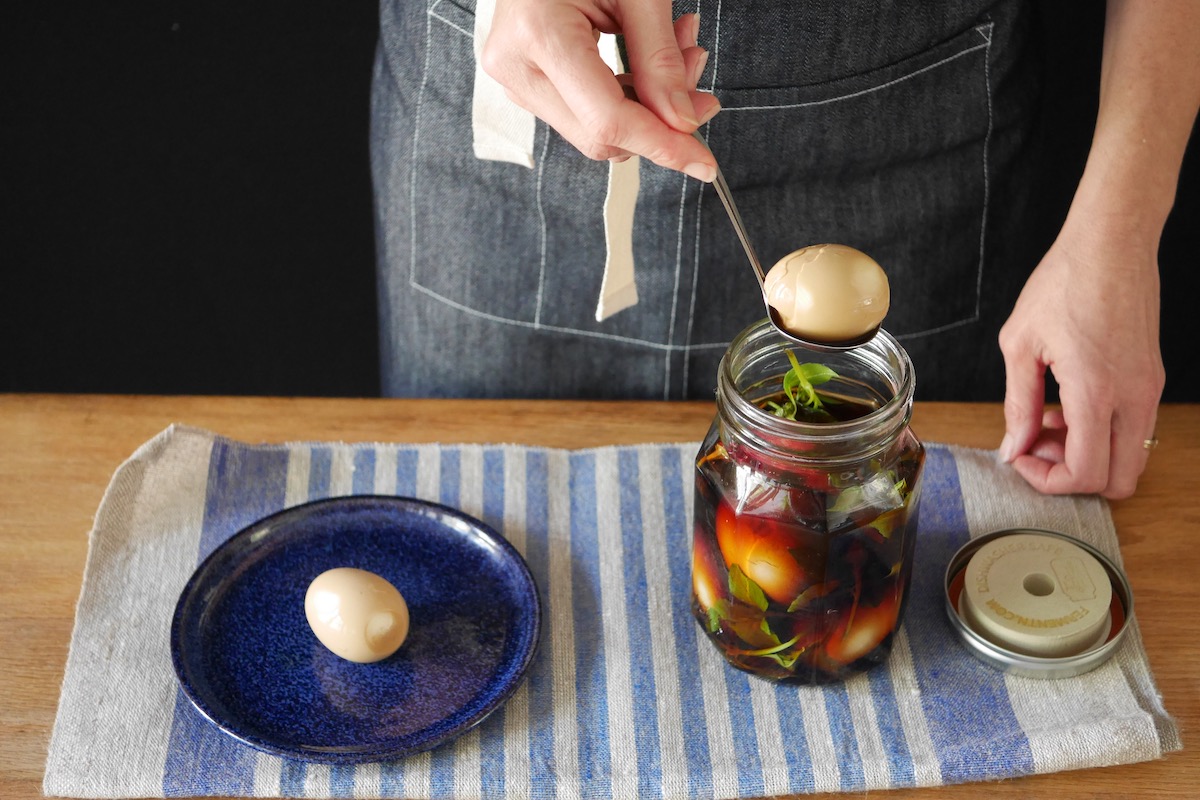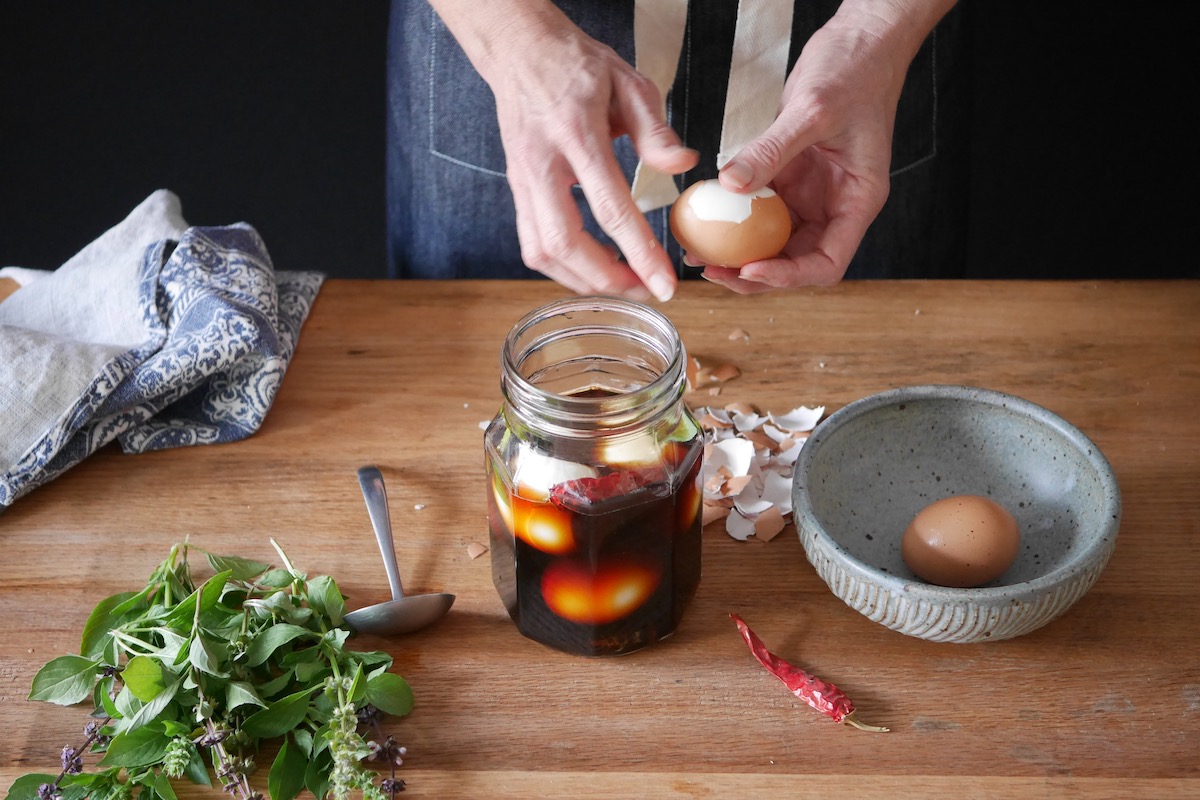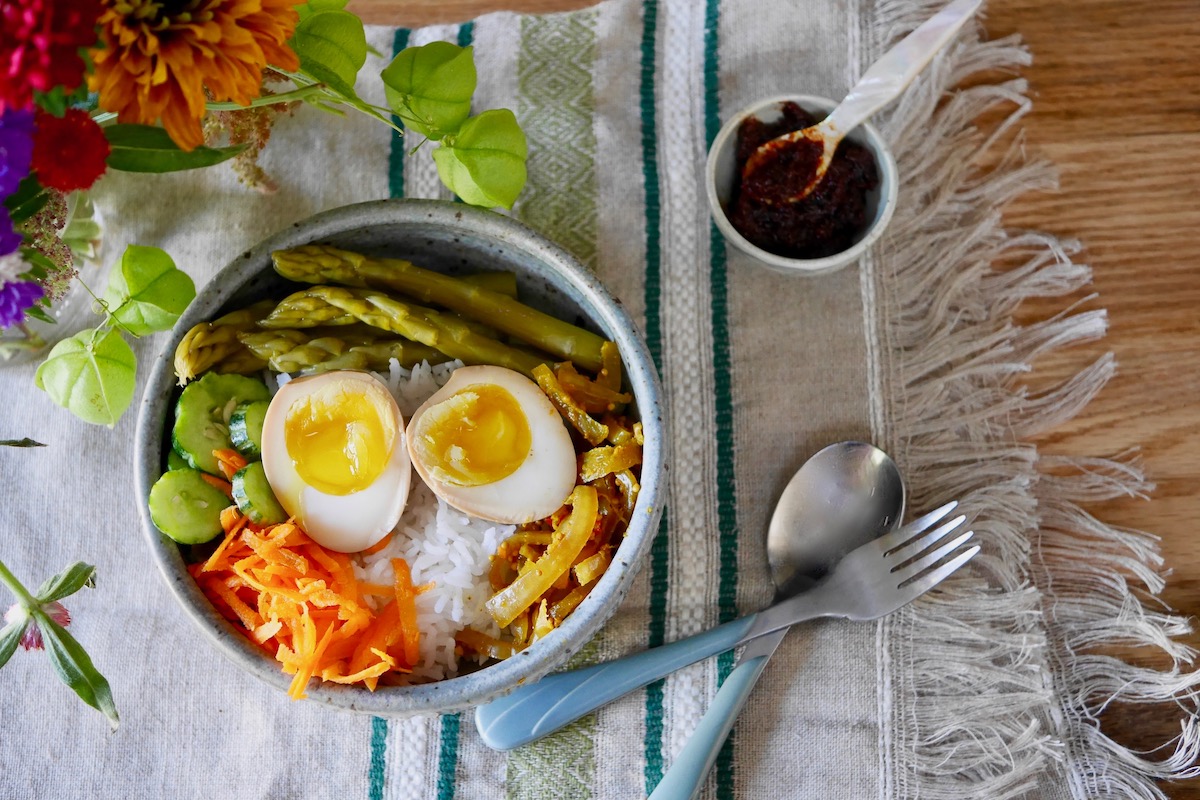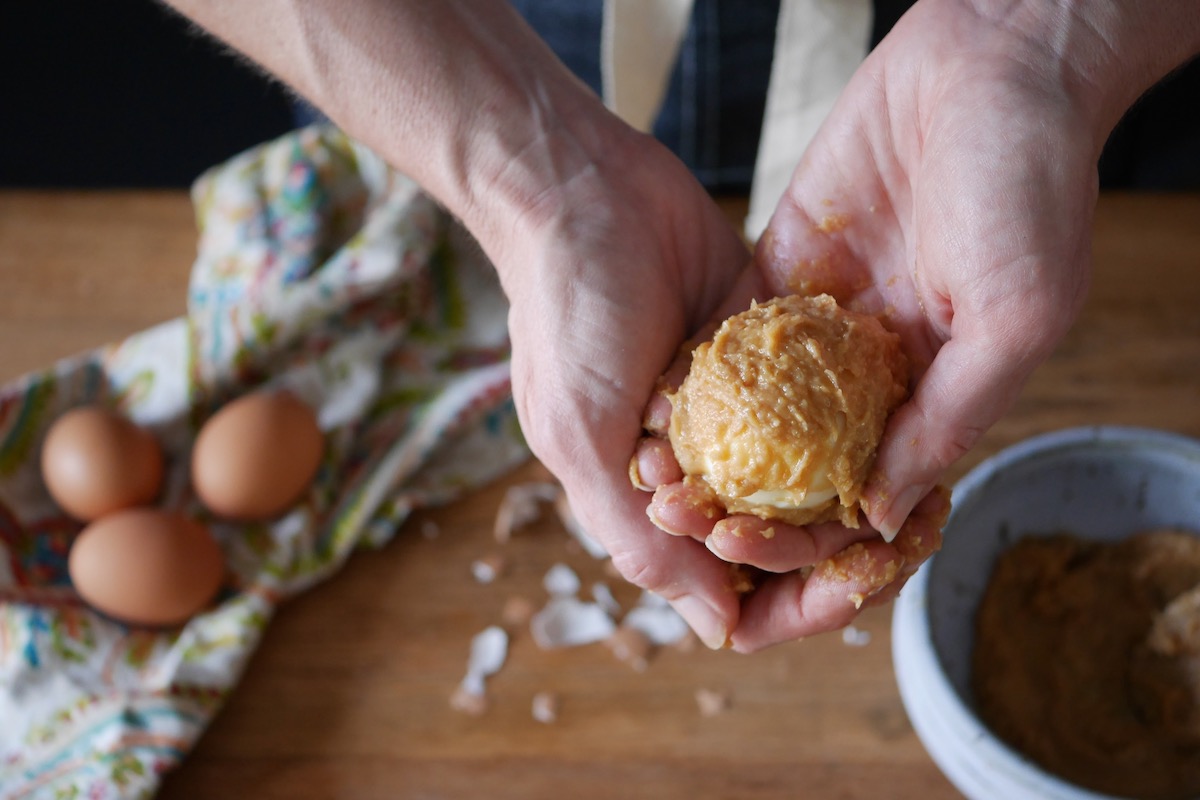Tsukemono – Shoyuzuke Eggs and Misozuke Eggs
Last October, American food professionals visited fermented food producers to deepen their knowledge of Japanese fermentation culture during the “Hakko Tourism in Japan” tour campaign. As part of the tour, organizers held a tasting session where guests gave candid advice from the perspective of the American market to food product manufacturers looking to enter the United States market.
Before there was refrigeration, traditional forms of curing, fermentation, drying, and aging—in short, preservation—allowed foodstuffs to last through a period of time without spoiling. This time could be hours, days, weeks, seasons, or years. Fermentation added time protection with the bonus of added deliciousness and often nutritional benefits. This is true throughout the world fermentation traditions. Tsukemono is one such tradition from Japan. The Japanese pickling methods are particularly artful and delicious. There is a large variety of pickles that are all part of the tradition of tsukemono, pronounced tskay-mo-noh, which is a generic term for pickled things—tsuke meaning pickled, marinated or steeped depending on the translation, and mono meaning things.
Shoyuzuke eggs
For best results and health benefits, use a naturally fermented soy sauce such as shoyu or tamari. This recipe also calls for mirin, which is a sweet sake seasoning. Makes 6 cured eggs.

Ingredients
- 355 ml (1½ cups) water
- 236 ml (1 cup) good-quality soy sauce, such as shoyu or tamari
- 30 to 44 ml (2 to 3 tablespoons) mirin (more makes a sweeter brine)
- 30 ml (2 tablespoons) rice vinegar or white wine vinegar
- Small strip of kombu, or a few threads of sea palm (kelp)
- A few sprigs or slices of one or two of the following: scallions, chives, garlic scapes, lemon basil, Thai basil, lemongrass, ginger, or hot chile pepper
- 6 hard boiled eggs
Directions
2. Gently lower the peeled boiled eggs into the brine. Place a small weight on top to keep the eggs fully submerged. Cover jar with a lid and place in the refrigerator and allow to cure for at least 7 hours.

Misozuke eggs

Ingredients
- 291 – 436 g (1 to 1½ cups) miso paste
- 6 hard boiled eggs
Directions

3. When the eggs are ready, gently remove the miso with your fingers and press the used miso into a resealable container, removing any air pockets as you pack it in. Keep the miso refrigerated, and reuse it for several more batches of eggs. Store the eggs in a separate airtight container in the fridge and use within 1 week.
4. To serve, you can rinse the eggs lightly if you prefer them smooth, or leave on any remaining miso for extra flavor. Cut the eggs in half with a sharp knife, rinsing the knife after each egg to give you a clean cut every time.
For More Recipes
Kirsten K Shockey is a renowned fermentation expert, author, and co-founder of The Fermentation School. She empowers people to connect with their food through hands-on workshops and her popular books, including Fermented Vegetables and Homebrewed Vinegar. Her expertise has made her a trusted authority in the world of fermentation.

